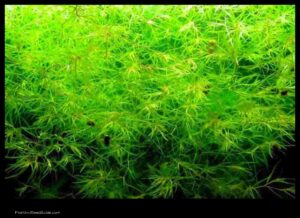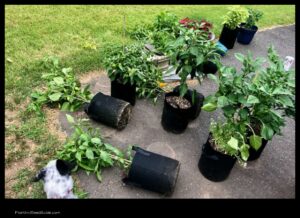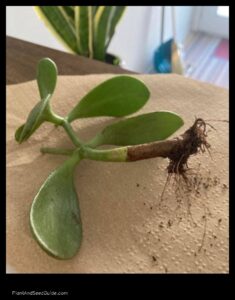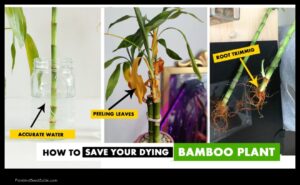When it comes to cutting mint for culinary use, it’s essential to do it right to ensure the plant’s health and longevity. Let’s dive into some expert tips that will help you harvest mint leaves without harming the plant.
- Timing Is Key: Harvest mint in the morning when the essential oils are most potent for the best flavor.
- Use Sharp Tools: Sharp scissors or pruning shears will make clean cuts, promoting faster regrowth.
- Pinch, Don’t Cut: For small amounts, pinch off leaves at the stem’s top to encourage bushier growth.
- Trim Strategically: Cut mint stems just above a leaf node to promote new growth from the node.
- Consider the Plant’s Growth Stage: Adjust cutting techniques based on whether the mint is young and tender or mature and woody.
- Proper Harvesting Techniques: Avoid stripping all leaves from a stem; instead, leave some for photosynthesis and growth.
- Stagger Harvesting: To prevent stress on the plant, harvest different stems each time rather than all at once.
Timing Is Key
When it comes to cutting mint without harming the plant, timing is absolutely crucial. Harvesting mint in the morning is key, as this is when the essential oils in the leaves are at their most potent, resulting in the best flavor for your culinary creations.
Using sharp tools is another essential tip for mint harvesting. Opt for sharp scissors or pruning shears to make clean cuts. Clean cuts promote faster regrowth and help maintain the plant’s overall health and vitality.
If you are harvesting small amounts of mint, consider pinching off the leaves at the top of the stem instead of cutting them. This method encourages the plant to grow bushier and fuller, providing you with a more abundant harvest in the long run.
When trimming mint stems, always aim to cut just above a leaf node. This strategic cutting technique promotes new growth from the node, ensuring that your mint plant remains healthy and productive.

Use Sharp Tools
When it comes to harvesting mint without causing harm to the plant, using sharp tools is essential. Sharp scissors or pruning shears are like the precision instruments of a surgeon in the operating room. They make clean cuts that heal quickly, promoting faster regrowth and ensuring the plant’s health. Just like a blunt knife can bruise and damage food, dull tools can crush and injure the mint plant. By using sharp tools, you are not only ensuring a smooth and efficient harvest but also showing respect to the plant’s resilience and vitality.
Here are some key points to remember when using sharp tools for cutting mint:
- Keep your tools sharp by regularly sharpening them to maintain their effectiveness.
- Choose the right tool for the job based on the thickness of the stems to prevent unnecessary damage.
- Always sanitize your tools before and after use to prevent the spread of diseases among your plants.
Pinch, Don’t Cut
When it comes to harvesting mint leaves, the technique of “Pinch, Don’t Cut” is crucial for the plant’s health and productivity.
This method not only ensures a clean break but also stimulates the plant to grow back bushier and fuller. By pinching the leaves, you are encouraging the mint to branch out and produce more foliage, creating a lush and vibrant plant.Instead of using scissors or shears, gently pinch off the leaves at the top of the stem..
Additionally, pinching off the leaves helps in maintaining the overall aesthetics of the plant, as it prevents the stems from looking uneven or ragged. This gentle approach mimics the natural browsing behavior of herbivores, prompting the mint to respond by growing more vigorously. Remember, a little pinch can go a long way in promoting the health and vitality of your mint plant.
Trim Strategically
When it comes to trimming your mint plant, strategic cuts can make all the difference in promoting healthy growth and ensuring a bountiful harvest. By focusing on where and how you trim, you can encourage the plant to flourish and thrive. Here are some key tips to trim mint strategically:
- Cut mint stems just above a leaf node to stimulate new growth from that point onwards.
- Remove any dead or damaged leaves to redirect the plant’s energy towards healthy foliage.
- Consider the overall shape of the plant and trim accordingly to maintain a balanced and robust appearance.
By following these strategic trimming techniques, you can help your mint plant reach its full potential and continue to provide you with fresh, flavorful leaves for culinary delights.
Consider the Plant’s Growth Stage
When it comes to harvesting mint, one crucial factor to consider is the plant’s growth stage. Understanding whether the mint is young and tender or mature and woody will help you adjust your cutting techniques for optimal results. Young mint plants are delicate and more sensitive to pruning, while mature plants may require more strategic trimming to encourage new growth.
Here are some tips to consider based on the plant’s growth stage:
- For young and tender mint:
- Be gentle when harvesting to avoid damaging the fragile stems.
- Focus on pinching off individual leaves rather than large sections.
- Allow sufficient time between harvests to let the plant recover and grow.
- For mature and woody mint:
- Use sharp tools to make clean cuts through the tougher stems.
- Trim just above leaf nodes to stimulate fresh growth.
- Regularly prune to prevent the plant from becoming too leggy and sparse.

Proper Harvesting Techniques
When it comes to proper harvesting techniques for mint, there are several key points to keep in mind to ensure the plant’s health and longevity. One essential aspect is to avoid stripping all leaves from a stem at once. By leaving some leaves behind, you allow the plant to continue photosynthesis and promote further growth.
Another important strategy is to stagger your harvesting. Instead of taking all the mint at once, consider harvesting different stems each time. This approach helps prevent stress on the plant and allows it to recover more effectively between harvests.
Additionally, it’s crucial to adjust your cutting techniques based on the plant’s growth stage. Whether the mint is young and tender or mature and woody, tailor your approach to ensure the best results.
Stagger Harvesting
When it comes to , it’s all about maintaining a delicate balance to ensure your mint plant thrives. By staggering your harvests, you can prevent the plant from experiencing undue stress and encourage continuous growth. Here are some key points to keep in mind:
- Rotate Harvesting Areas: Instead of focusing on one section of the plant each time, rotate the stems you harvest from to distribute the impact evenly.
- Allow Recovery Time: Give the mint plant some time to recover between harvests, allowing it to replenish its nutrients and energy.
- Observe Growth Patterns: Pay attention to how the plant responds to harvesting; adjust your schedule based on its growth rate and overall health.
By implementing a staggered harvesting approach, you can enjoy a bountiful supply of fresh mint leaves while ensuring the plant remains healthy and productive in the long run.
Frequently Asked Questions
- How often can I harvest mint leaves?
You can harvest mint leaves every 2 to 3 weeks during the growing season, allowing the plant to regenerate and thrive.
- Can I use kitchen scissors to cut mint?
Yes, sharp kitchen scissors are suitable for cutting mint leaves, ensuring clean cuts that promote healthy regrowth.
- Should I wash mint leaves before using them?
It is recommended to gently rinse mint leaves before use to remove any dirt or debris, ensuring cleanliness in your culinary creations.
- Wild Rose Country: Exploring Untamed Beauty - July 15, 2024
- Wildflower Nursery Decor: Bringing Nature Indoors - July 15, 2024
- Young Sprout of Grass: Nurturing New Life - July 15, 2024








